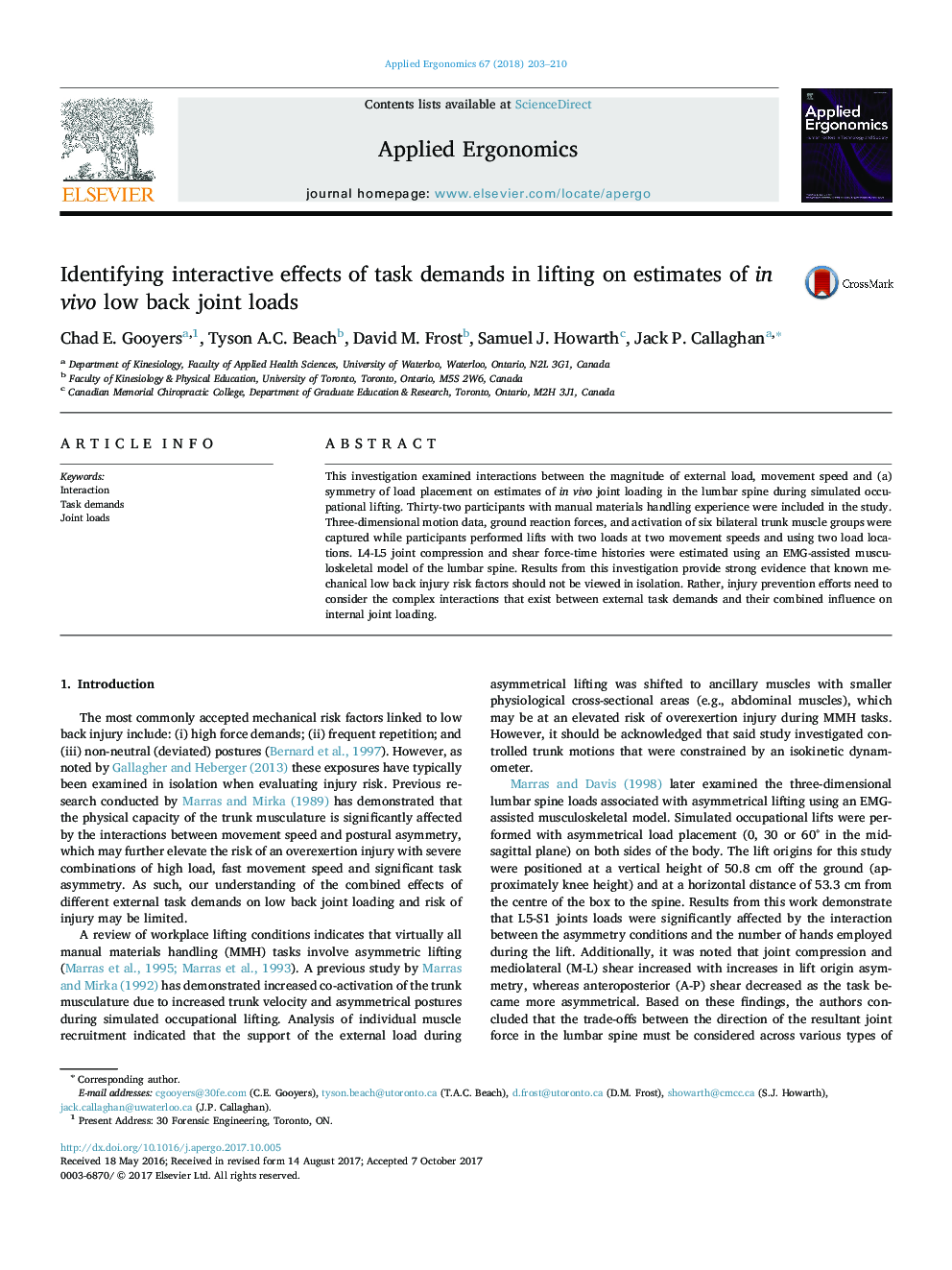| Article ID | Journal | Published Year | Pages | File Type |
|---|---|---|---|---|
| 4971910 | Applied Ergonomics | 2018 | 8 Pages |
Abstract
This investigation examined interactions between the magnitude of external load, movement speed and (a)symmetry of load placement on estimates of in vivo joint loading in the lumbar spine during simulated occupational lifting. Thirty-two participants with manual materials handling experience were included in the study. Three-dimensional motion data, ground reaction forces, and activation of six bilateral trunk muscle groups were captured while participants performed lifts with two loads at two movement speeds and using two load locations. L4-L5 joint compression and shear force-time histories were estimated using an EMG-assisted musculoskeletal model of the lumbar spine. Results from this investigation provide strong evidence that known mechanical low back injury risk factors should not be viewed in isolation. Rather, injury prevention efforts need to consider the complex interactions that exist between external task demands and their combined influence on internal joint loading.
Keywords
Related Topics
Physical Sciences and Engineering
Computer Science
Human-Computer Interaction
Authors
Chad E. Gooyers, Tyson A.C. Beach, David M. Frost, Samuel J. Howarth, Jack P. Callaghan,
